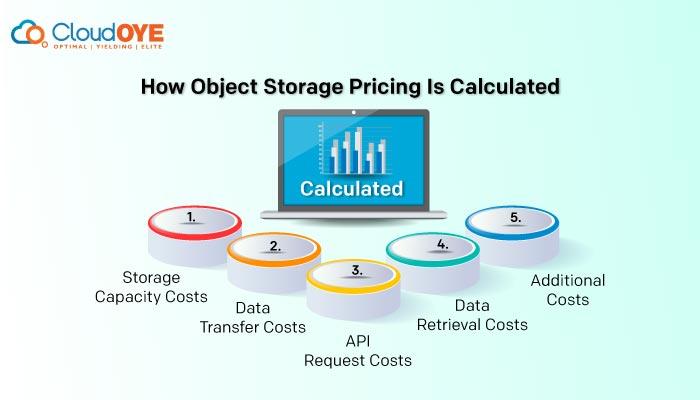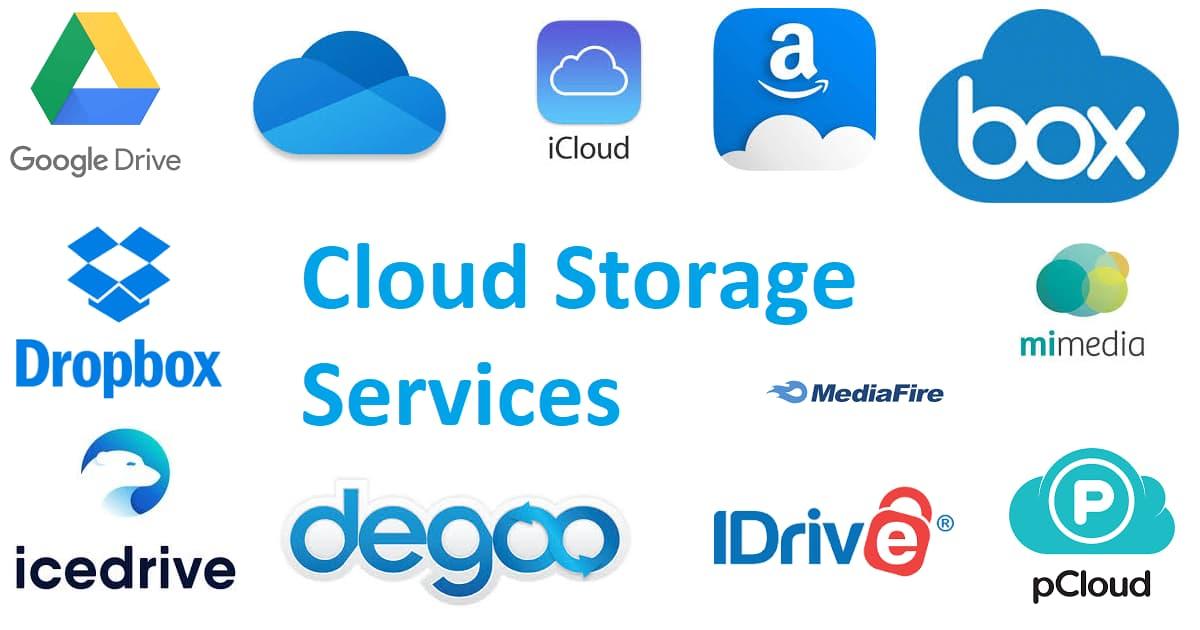In a world where data flows endlessly from devices, documents, and memories, the need for reliable cloud storage has never been greater. But with an array of options flooding the market, each promising speed, security, and seamless access, how do you sift through the noise to find the perfect fit? Choosing the right cloud storage service isn’t just about picking the cheapest plan or the flashiest interface—it’s about understanding your unique needs and translating them into a digital space that keeps your data safe, accessible, and organized. this guide will illuminate the key considerations to help you navigate the cloud with confidence and clarity.
Understanding Your Storage Needs and Data Types
When selecting a cloud storage service,the first step is to take a extensive inventory of your storage needs and the types of data you plan to store. not all data is created equal—some files require high security, others need fast access times, and some just need a simple backup solution. Understanding this will help you narrow down your options to services tailored to your specific requirements.
Consider the following factors to better evaluate your storage needs:
- Data volume: Are you managing a few gigabytes or several terabytes of data?
- Data sensitivity: Will you store confidential or regulated information requiring encryption and compliance certifications?
- Access frequency: Do you need immediate access to files (hot storage) or are you archiving rarely accessed data (cold storage)?
- Data formats: Different providers optimize their systems for specific file types such as media files, databases, or documents.
| Data Type | Recommended Storage Feature | Example Use Case |
|---|---|---|
| media Files (Video, Images) | High bandwidth & CDN support | Streaming services or creative portfolios |
| Documents & Spreadsheets | Collaboration & version control | Business teams & remote workspaces |
| Databases & Backup | Automated backup & strong encryption | Enterprise IT & compliance needs |
By pinpointing your exact storage profile, you can explore offerings from industry leaders like Amazon S3 or Google Cloud Storage, both of which provide scalable, secure options tailored to various data types. don’t overlook options for compliance if your data is regulated—providers such as Microsoft Azure Storage often include certifications relevant to enterprises with strict data policies.

Comparing Security Features and Privacy Policies
When deciding on a cloud storage provider, understanding the nuances of their security frameworks is essential. Top-tier services often deploy end-to-end encryption,ensuring your data remains unreadable to anyone but you—even the service provider. Additionally, multi-factor authentication (MFA) adds a crucial layer of defense by requiring multiple verification steps before granting access. But beyond encryption and MFA, examine whether the service includes automated backups and intrusion detection systems, which proactively shield your files from loss and unauthorized access.
Privacy policies reveal how your data is handled behind the scenes and should be scrutinized carefully. Look for services that explicitly state they do not sell your data or share it with third parties without consent. Transparency about data retention, compliance with regulations like GDPR or CCPA, and clear protocols for government requests are marks of a trustworthy vendor. Here’s a brief comparison highlighting vital security and privacy features:
| Feature | Provider A | Provider B | Provider C |
|---|---|---|---|
| End-to-End Encryption | Yes | No | yes |
| Multi-Factor Authentication | yes | Yes | No |
| Data Sharing Policy | No third-party sharing | Shared with affiliates | Pending user consent |
| Regulatory Compliance | GDPR & CCPA | GDPR Only | None Specified |
For a deeper dive into cloud security standards and privacy best practices, consult resources like the National Institute of Standards and technology (NIST) or the Information Commissioner’s Office (ICO). These offer authoritative guidance to help you pinpoint a cloud service that aligns with your security expectations and privacy values.

Evaluating Cost Structures and Hidden Fees
When selecting a cloud storage provider, understanding the full spectrum of costs is crucial to avoid unpleasant surprises down the line. Its not just about the base subscription fee; manny services have additional charges that can quietly inflate your monthly expenses. These might include fees for data retrieval, API requests, or charges for exceeding bandwidth limits. To make an informed decision, carefully analyze the pricing model and pay attention to what’s included and what comes as an extra. Remember, the cheapest plan upfront may become the most expensive over time if hidden fees are not considered.
Additionally, keep in mind that some providers introduce costs related to:
- Data transfer between regions – moving your files from one geographic area to another can incur charges
- Storage class transitions – shifting data between tiers like standard, archival, or deep archival storage
- Account management features – extra tools or user licenses may come at a premium
| Cost Aspect | Potential Fees | Impact |
|---|---|---|
| Data Retrieval | $0.01–$0.10 per GB | Can spike if frequent access is required |
| API Requests | $0.005 per 1000 requests | Matters for automated workflows |
| Cross-Region Transfer | $0.02–$0.12 per GB | Affects distributed teams |
For a robust comparison of cloud storage pricing and hidden fees, resources like Gartner’s cloud research and the official AWS pricing page provide transparent and up-to-date information. Being vigilant about these nuances ensures you choose a solution that aligns perfectly with your budget and operational needs.

Exploring Integration with Existing Tools and Platforms
When considering a cloud storage service, one of the most critical factors is how well it integrates with the tools and platforms you already rely on for work or personal use. Seamless integration can save you a meaningful amount of time and effort, allowing you to maintain productivity without constantly switching between different applications. Look for services that offer robust compatibility with popular office suites, project management tools, and interaction platforms.
Here are some key points to evaluate when assessing integration capabilities:
- Native Plugins and Extensions: Does the cloud storage provider offer official plugins for platforms like Microsoft 365, Google Workspace, or Adobe Creative Cloud?
- APIs and Automation: For advanced workflows, the availability of APIs allows custom automation through tools like Zapier or Integromat, enabling smooth data transfer and synchronization.
- File Sharing and Collaboration: Integrated collaboration features help streamline team efforts in environments such as Slack, Trello, or Asana.
| Cloud Service | Key Integrations | Popular Use Case |
|---|---|---|
| Dropbox | Microsoft Office, Slack, Zoom | Team Collaboration |
| Google Drive | Google Workspace, adobe, Zapier | Content Creation & Automation |
| OneDrive | Microsoft 365, Power Automate | Enterprise Document Management |
Deep integration not only enhances ease of use but also bolsters security by ensuring your data flows only through trusted, well-audited channels. For further guidance on cloud security and integration best practices, resources like Cisco’s Cybersecurity Report and NIST guidelines offer authoritative insight.

Assessing Customer Support and Service Reliability
When selecting a cloud storage provider, the quality of customer support can make all the difference in your overall experience. A responsive, learned support team ensures you get timely assistance, minimizing downtime and frustration. Look for services that offer multiple channels of communication, such as live chat, phone support, and comprehensive help centers. This variety allows you to choose the support method that best fits your needs and urgency.
Another critical factor is the service’s reliability. How often do outages occur, and what is the average recovery time? Most top-tier providers publish their uptime statistics and incident reports—make sure to review these metrics before committing. Providers with a strong track record often guarantee 99.9% uptime or higher, giving you confidence in uninterrupted access to your data.
| Provider | uptime Guarantee | Support Channels | Response Time |
|---|---|---|---|
| Amazon S3 | 99.99% | Chat, Phone, Email | Under 1 Hour |
| Google Cloud Storage | 99.95% | Chat, Phone, Forum | 1-2 Hours |
| Microsoft Azure Blob | 99.9% | Phone, Email, Ticket System | 2 Hours |
assess whether the provider offers proactive monitoring and alerts, ensuring you’re promptly notified of any service disruptions or suspicious activities. The best cloud storage solutions don’t just react—they anticipate challenges, helping you to maintain seamless data operations.For further insights into support best practices and service level agreements, organizations like Gartner offer authoritative analysis and guidance.
In Summary
Choosing the right cloud storage service may feel like navigating an endless sky of options, but with a clear understanding of your needs and priorities, the perfect fit is within reach. Whether you seek speed, security, affordability, or seamless integration, the ideal cloud solution is waiting quietly above—ready to give your data a safe, accessible home. As you embark on this digital journey, remember that the cloud isn’t just about storage; it’s about empowerment, adaptability, and peace of mind in an ever-connected world. So take a breath, review your options thoughtfully, and watch your digital life take flight.





